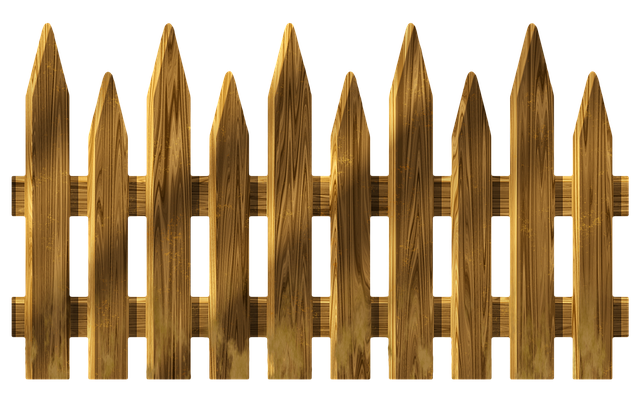For New Bedford, Massachusetts homeowners looking to enhance their outdoor spaces, installing a fence offers both privacy and security. This comprehensive guide equips you with the knowledge to tackle the project yourself. From understanding your fencing options tailored to New Bedford’s unique yard configurations, to gathering the necessary tools and materials, and step-by-step instructions for building a sturdy wooden fence, we provide expert tips. Additionally, learn how to maintain your new fence through seasonal adjustments specific to Massachusetts’ climate.
- Understanding Your Fence Options for New Bedford Yards
- Measuring and Planning for Successful Installation
- Gathering Tools and Materials Essential for DIY
- Step-by-Step Guide: Building a Solid Wooden Fence
- Tips for Maintaining Your New Fence in Massachusetts Climate
Understanding Your Fence Options for New Bedford Yards
When it comes to fencing your New Bedford, Massachusetts yard, there’s a wide array of options to consider. From traditional wood and vinyl to modern metal and composite materials, each style offers unique benefits in terms of aesthetics, durability, and maintenance. Wood fences exude a natural charm but require regular painting or staining and careful maintenance to prevent rot and insect damage. Vinyl fences are low-maintenance and resistant to rot, decay, and peeling but may not offer the same level of privacy as wood. Metal fences, though sturdy and durable, can be expensive and might not align with the more traditional aesthetic preferred by many New Bedford homeowners. Composite fences, made from a blend of plastic and wood fibers, strike a balance between durability and visual appeal, offering low maintenance and long-lasting performance. Understanding these options is the first step in choosing the right fence for your yard.
Measuring and Planning for Successful Installation
Before you start installing your new fence, taking the time to measure and plan is crucial. Start by assessing the perimeter of the area where you want the fence to go. Use a measuring tape to get accurate measurements, noting any irregularities or obstacles like trees or utility lines that could affect placement. Create a detailed plan that includes the layout of the fence, the types of materials you’ll use, and how you’ll connect each section. This step is essential for ensuring your fence is level, secure, and aligns with local regulations.
When planning, consider the height and style of your desired fence. Different styles require varying installation techniques, so research or consult with a professional to determine what works best for your needs. Additionally, check with your local authorities about any permits required for fence installation in New Bedford, Massachusetts. Proper planning will save you time, effort, and potential headaches down the line.
Gathering Tools and Materials Essential for DIY
When planning a DIY fence installation, gathering the right tools and materials is the first step to a successful project. New Bedford homeowners should ensure they have a variety of hand tools like hammers, saws, measuring tape, and post-hole diggers. These will be crucial for driving posts, cutting rails, and digging holes. Additionally, it’s essential to stock up on fence components such as posts, rails, brackets, and fencing material—wooden or vinyl pickets depending on your preference. Don’t forget protective gear like gloves and safety goggles; these are often overlooked but vital for a safe and comfortable work environment.
Step-by-Step Guide: Building a Solid Wooden Fence
Building a wooden fence is a rewarding DIY project that adds curb appeal and privacy to your New Bedford, Massachusetts property. Here’s a step-by-step guide to ensure your new fence is solid and durable.
First, plan your fence layout by measuring and marking the perimeter. Choose the type of wood suitable for outdoor use and cut the posts to size, ensuring they are straight and well-fitted. Dig holes for the posts, making them deep enough to provide stability. Place a concrete foundation in each hole, allowing it to set completely. Attach the horizontal rails securely to the posts, spacing them evenly. Then, attach the fence panels, using nails or screws, leaving a small gap between each panel for expansion. Finally, add a gate if needed, ensuring smooth operation through proper hinging and latching mechanisms.
Tips for Maintaining Your New Fence in Massachusetts Climate
Maintaining your new fence in the Massachusetts climate requires a few key strategies. First, choose a durable material designed to withstand harsh winters and frequent rainfall. Wood is a popular option but should be treated with a weather-resistant finish to prevent rot and decay. For a longer-lasting solution, consider vinyl or metal fencing, which are more resistant to the elements and require minimal upkeep.
Regular cleaning and inspections are crucial for fence longevity. Remove leaves, branches, and other debris that can accumulate over time, especially after storms. Inspect your fence for any signs of damage, such as broken boards or loose posts, and repair or replace them promptly. Applying a fresh coat of paint or sealant annually can also protect your fence from the harsh Massachusetts weather conditions.
